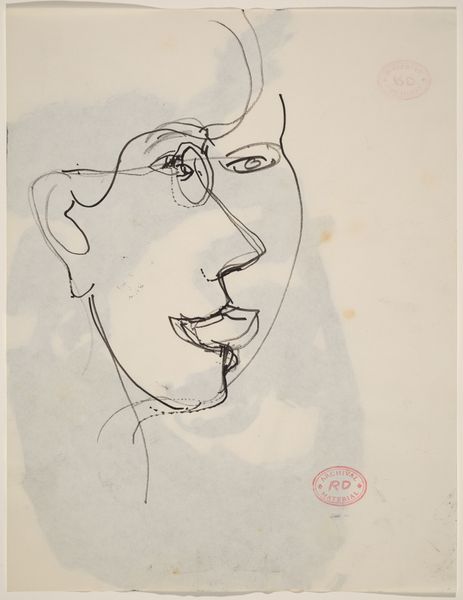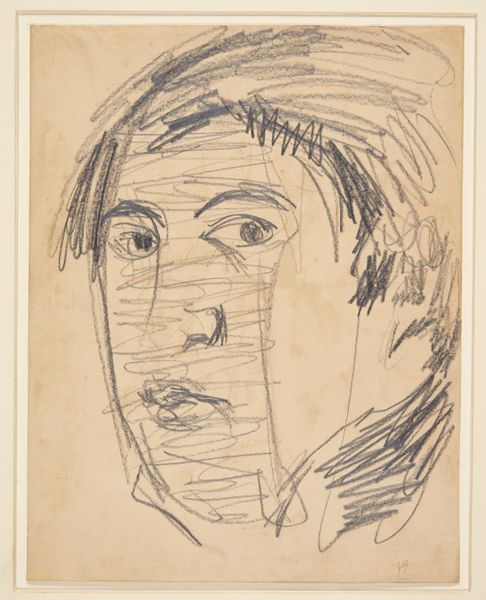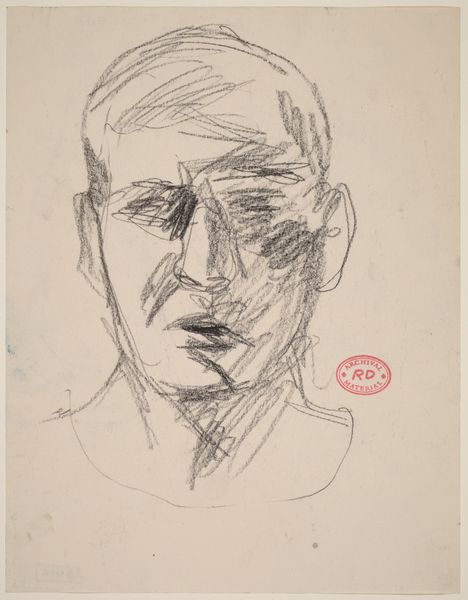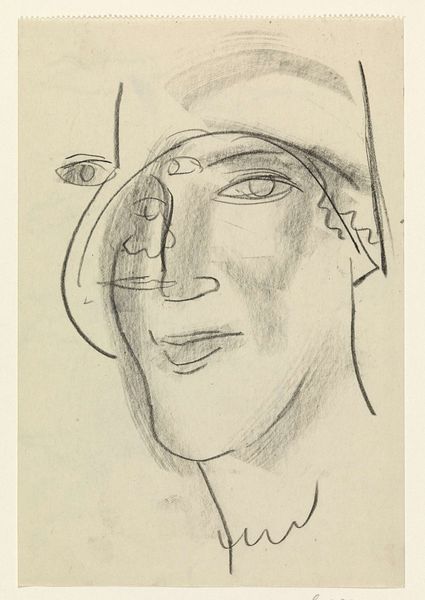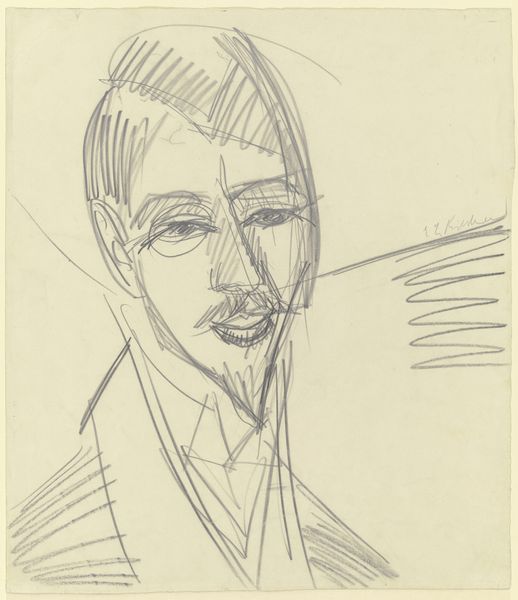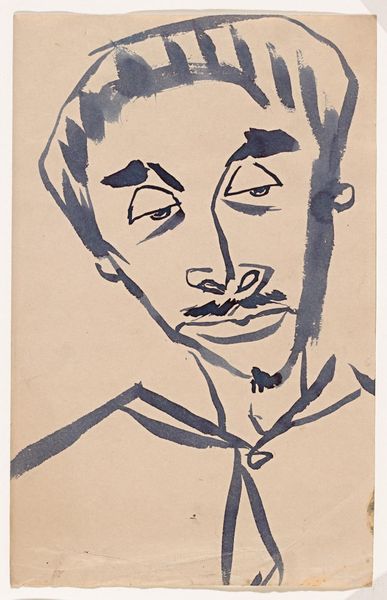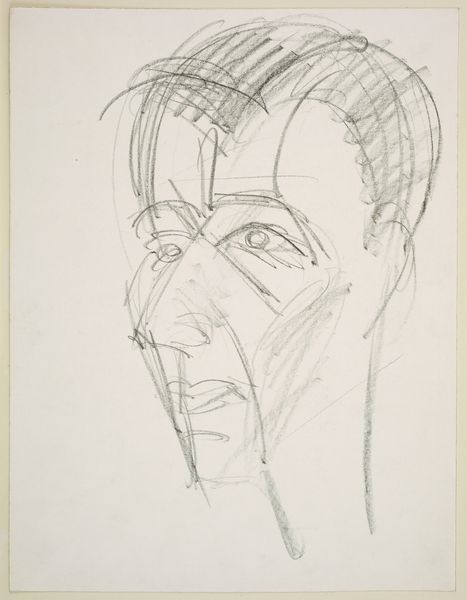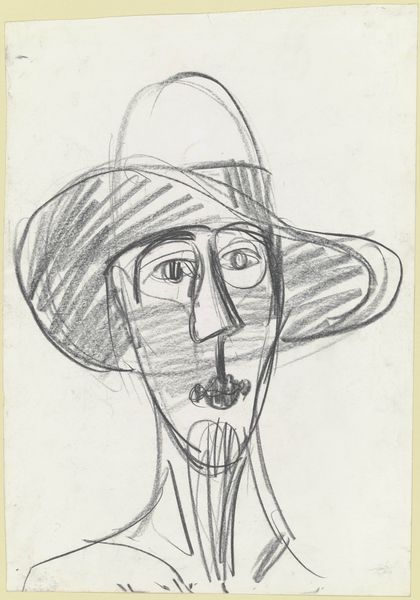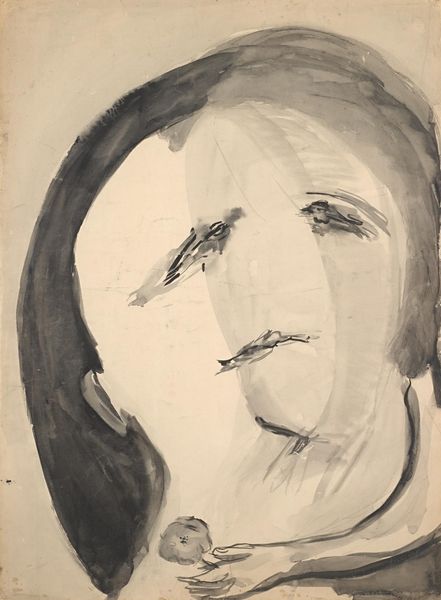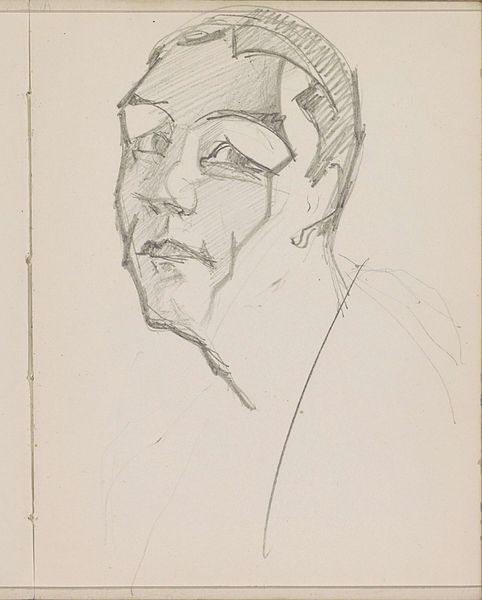![Untitled [head] by Richard Diebenkorn](/_next/image?url=https%3A%2F%2Fd2w8kbdekdi1gv.cloudfront.net%2FeyJidWNrZXQiOiAiYXJ0ZXJhLWltYWdlcy1idWNrZXQiLCAia2V5IjogImFydHdvcmtzLzRlNjEyMThiLTMyNjEtNDY4MC04YzBiLTFiOGNiMTg2OGZkNC80ZTYxMjE4Yi0zMjYxLTQ2ODAtOGMwYi0xYjhjYjE4NjhmZDRfZnVsbC5qcGciLCAiZWRpdHMiOiB7InJlc2l6ZSI6IHsid2lkdGgiOiAxOTIwLCAiaGVpZ2h0IjogMTkyMCwgImZpdCI6ICJpbnNpZGUifX19&w=3840&q=75)
drawing, charcoal
#
portrait
#
abstract-expressionism
#
drawing
#
light pencil work
#
pencil sketch
#
figuration
#
personal sketchbook
#
bay-area-figurative-movement
#
idea generation sketch
#
ink drawing experimentation
#
pen-ink sketch
#
arch
#
sketchbook drawing
#
portrait drawing
#
pencil work
#
charcoal
#
sketchbook art
Dimensions: overall: 43.2 x 34.9 cm (17 x 13 3/4 in.)
Copyright: National Gallery of Art: CC0 1.0
Curator: This unsettling head practically vibrates off the page. It looks confrontational, almost grotesque. What do you make of it? Editor: Well, let's establish what we're looking at. This is an untitled drawing by Richard Diebenkorn, created sometime between 1955 and 1967. The materials appear to be charcoal and possibly pencil on paper. It's definitely a study in form rather than a polished piece for public display. Curator: Study is right. The head feels archetypal, like an Everyman stripped bare, presented raw. I'm intrigued by the hat. It suggests authority but is drawn with such simple lines it seems to mock the idea of power. It adds a strange formality. Editor: That simplicity speaks to the influence of Abstract Expressionism, wouldn't you agree? It's clear Diebenkorn isn't concerned with realistic representation. More so, the artwork might challenge traditional portraiture itself, stripping it of its usual flattery and idealization. Curator: Exactly. The starkness contributes to a psychological intensity. The eyes are uneven, unbalanced, and suggest a deep-seated anxiety. Look how the lines intersect and build on each other. It’s not about visual accuracy, but about rendering emotional presence. I'm reminded of Francis Bacon, portraying distorted visions of humanity, as well as similar angst-filled postwar figurations of humanity. Editor: Diebenkorn worked within the California art scene, and it would be helpful to also mention its impact. Also, it seems relevant to note that at the time, there was some pressure on artists to address social issues or experiment with complete abstraction. And even though this artwork lacks the obvious historical allusions present in history painting, Diebenkorn gives the familiar themes of human condition a rawer aesthetic. Curator: And ultimately it begs the question of who this individual is. Is it anyone we might recognize across history, a shared visual memory of existential dread made manifest? Editor: The work allows us to revisit questions, through drawing practices, regarding social forces of the time, cultural impact of expressionism, or more widely the human condition as revealed by individual approaches to traditional genres of figuration. Curator: Agreed. A provocative sketch, inviting contemplation on what it means to be human, represented in the language of art. Editor: Indeed. I hope that these details invite you to look again.
Comments
No comments
Be the first to comment and join the conversation on the ultimate creative platform.
